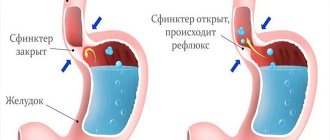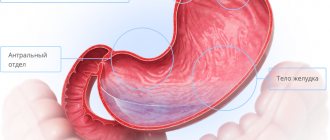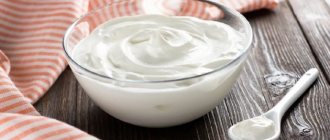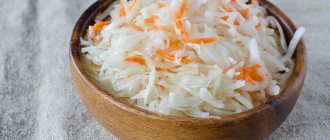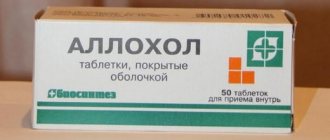Somewhere in the late fourth century and early third century BC, the father of medicine, Hippocrates, said: “All disease begins in the intestines.” More than two thousand years have passed, medicine has advanced incredibly far. Like to the moon and back. And most studies confirm the words of the ancient Greek healer and philosopher. If not everything in the body, then a lot is tied to the intestines. A healthy gut means clean, glowing skin, good brain function, strong immunity, energy and calmness. The older we get, the less diverse our intestinal microflora becomes - and this affects our well-being and quality of life. Therefore, the intestines need to be protected from a young age. We will tell you below what you can do right now to improve the health of one of the most important organs.
Eat more fiber
Eating plenty of fiber keeps your intestinal cells healthy and ensures your digestive system is properly clearing waste. According to doctors, a lack of fiber negatively affects the microflora: the number of good bacterial strains decreases, and an imbalance arises between bad and good bacteria. This can not only provoke the development of inflammation in the intestines, but also affect the course of other diseases - arthritis, obesity, diabetes, etc.
Foods high in fiber include whole grain pasta and bread, oats, berries, pears, melons, broccoli, carrots and nuts.
Treatment with celandine
Treatment with celandine is quite common for intestinal diseases. Celandine has a fairly rich spectrum of action. It helps well both with skin diseases and problems with the gastrointestinal tract. A positive effect was observed in the treatment of various digestive problems, dyspepsia and inflammatory bowel diseases.
For treatment, you can purchase tablets, an extract, an infusion of the plant at the pharmacy, or prepare a healing infusion from dried celandine yourself. To prepare a healing drink, you need to pour 1 teaspoon of dried celandine into a glass of boiling water and leave for 20-30 minutes. Then the infusion is filtered and taken orally 1-2 times a day before meals.
Important! Long-term use of celandine infusion in large doses can cause liver disease. Before starting treatment, it is extremely important to consult with a specialist who can calculate the exact dosage and give the necessary recommendations.
Feed your bacteria prebiotics
Prebiotics work as fertilizer for probiotics. They are found in leeks, garlic, chicory and beans. True, in order for the health benefits of eating these products to be at all noticeable, you will have to eat an unimaginable amount. Therefore, it is easier to take a prebiotic supplement (like Eubicor). It is also important that the diet contains products with polyphenols (tea, cocoa). They promote the growth of good bacteria (such as bifidobacteria) and inhibit the growth of bad bacteria (such as C. Difficile).
Home therapy for dysbiosis
Dysbacteriosis is a pathological condition of the intestines that develops while taking antibiotics or due to poor nutrition. Symptoms of the disease are:
- feeling of discomfort in the abdomen;
- frequent or causeless rumbling;
- stool disorders;
- increased gas formation;
- frequent abdominal pain regardless of food intake.
Treatment of dysbiosis at home should be subject to a certain algorithm. It is extremely important for the patient to adhere to the following rules:
- it is necessary to normalize the diet. For example, for frequent diarrhea, foods such as crackers, boiled eggs and baked apples will be useful. It is very important to exclude any foods that can trigger fermentation processes. These include fresh baked goods and mushrooms. You should eat foods high in fiber and bran every day;
- take natural probiotics. Probiotics are found in large quantities in dairy products, artichokes, bananas and garlic;
- use herbal decoctions. You can purchase ready-made herbs in dried form at any pharmacy; in addition, if you wish, you can use fresh raw materials. However, it is important to remember that you need to collect herbs away from city limits and roads.
Herbal treatment
In this case, intestinal disease can be cured with the following recipes:
- Eat flax seeds daily. The procedure must be repeated in the morning and evening, while the seeds can be eaten either dry or poured boiling water over them and left for an hour, after which they can be drunk along with the infusion;
- drink celery juice. To prepare such a home remedy, take only freshly squeezed juice, which is consumed in a tablespoon three times a day before meals;
- plantain decoction. A tablespoon of plantain leaves is poured into a glass of boiling water, brought to a boil and left for 60 minutes. After this, the broth is filtered, a spoonful of copper is added to it and drunk in small sips throughout the day.
Treatment with garlic
Regular garlic has the unique ability to restore intestinal microflora and at the same time destroy pathogenic organisms. For treatment, you can use milk with garlic. To prepare this product, you need to take 2-3 cloves of garlic and chop them using a press. After this, pour a glass of milk into the garlic paste and bring to a boil. The broth must be cooled and strained. To remove the unpleasant aftertaste, you can add a teaspoon of honey to the milk. The product is taken 2-3 times a day before meals, 1⁄2 cup. In addition, you can eat garlic in its pure form with meals.
Dairy products
Homemade kefir restores the intestinal microflora very well. To prepare it, add a few crusts of black bread to a liter of warm milk and leave it in a warm place for a day. After the time has elapsed, the drink is filtered and drunk throughout the day, regardless of meals.
Honey for the gastrointestinal tract
If you are not allergic to bee products, you can use the following recipes:
- honey mash. To prepare it, you need to take 500 milliliters of water, one large spoonful of honey and sugar. After this, you need to add 0.5 teaspoon of fresh yeast and place in a warm place for an hour. Drink the drink immediately after preparation;
- honey water. Ordinary honey water has no less effect. To prepare it, take a tablespoon of propolis honey and dilute it in a glass of warm water. The drink is consumed after preparation 2-3 times a day.
Any problems with the intestines require immediate treatment. It is important to understand that the use of traditional methods must be agreed upon with the attending physician, otherwise such therapy can significantly aggravate the situation.
Build a defense against stress
During times of stress, the human body produces the hormone cortisol. It can cause dysregulation of gut-brain communication pathways. Simply put, there is a change in blood flow and secretion in the intestines, and this is fertile ground for the reproduction and growth of harmful bacteria.
One of the best ways to cope with stress is to massage your stomach two hours after eating. First, it will improve bowel function directly. Secondly, it will do it indirectly because it will help you relax.
- Start massaging your palm from the middle of your pubic bones to your upper central abdomen using light, gentle movements. This massage movement follows the meridian used in acupuncture and helps increase the flow of energy in your body.
- Now make 50 small clockwise circles around your belly button.
- Expand the area to include the chest and pelvic bones (repeat 50 times). This action will benefit your colon.
Diagnostic methods for examining the intestines and gastrointestinal tract.
The condition of the pancreas, kidneys, liver, gallbladder and spleen will be determined by an ultrasound of the abdominal organs.
To examine the condition of the large intestine, barium irigoscopy is prescribed. The procedure is very unpleasant, although almost painless. It allows you to clarify the patency of the large intestine, its location and length, the presence or absence of neoplasms.
The small intestine is examined using a barium passage. Before the procedure, as well as before performing irigoscopy, it is necessary to cleanse the intestines - a lot has been written about this on the Internet.
The condition of the stomach and duodenum is examined using fibrogastroduadenoscopy. This procedure is better known as "gut swallowing." It’s unpleasant, but only with her help, during hospitalization, Natalya was diagnosed with gastritis and gastroesophalic reflux.
But the most accurate state of all abdominal organs and gastrointestinal organs was obtained after an MRI of the abdominal cavity. A deformation of the pancreas was discovered due to an attack of acute pancreatitis missed by doctors (!!!), a gallbladder clogged with sand, and a disorder of the esophagus and swallowing reflex.
Only after an MRI and when the entire area of the abdomen and legs were covered with spots of dermatitis, and purulent wounds appeared on the skin of the back and head, after 5 months of pain, the head of the clinic wrote out a referral for hospitalization. Subsequently, her attending physician said that a lot of time had been lost, at least 3-4 months. Many complications and diagnoses could have been avoided.
Drink more clean water
If you don't have kidney problems, try to drink more clean water. It helps the digestive system better absorb nutrients, vitamins and minerals.
A “dry” intestine stops contracting correctly and pushing leftover food “out”, hence constipation. Start your day with a glass of water and keep a water bottle with you at all times. 1.5 liters of plain drinking water is enough for an average-sized adult to keep the intestines in good condition.
Herbal remedies for colitis
- Chamomile infusion (3 tablespoons of chamomile, 700-800 ml of boiling water) is mixed with 70-100 grams of honey. Taken 3-4 times a day. The course of treatment is 30-45 days. For complicated colitis, an additional course of treatment is allowed after a 14-day break.
- St. John's wort is mixed with 40% vodka in the ratio: 1:5. The composition is infused for 9-13 days. At the end of the period, the solution is filtered and taken in 45-50 drops. 2-3 times a day.
- St. John's wort is mixed with water in a proportion of 2 tbsp. spoons of herbs per half liter of boiling water. Infuses for one and a half hours. You should take a third of a glass 3 times a day 30 minutes before meals. Helps with enterocolitis.
- An infusion of St. John's wort against colitis is prepared in a similar way. The difference is that St. John's wort must be filled with water and boiled for 12-15 minutes.
- Herbal mixture (10 grams of each component):
- Bird cherry fruits;
- Burnet roots;
- Alder fruits;
- Peppermint);
- Cumin (fruit);
- Fennel (fruit);
- Licorice;
- Highlander roots;
- Chamomile;
- St. John's wort.
Herbal mixture (2 tablespoons) is mixed with 500 milliliters of water. The resulting mixture is boiled for 2-3 minutes over low heat, after which it is necessary to infuse the solution for 1.5-2 hours. After straining, honey is added to the tincture (1 tablespoon per 1 glass of composition). You should take half a glass up to 4 times a day, half an hour before meals. The recipe is effective for enteritis.
On topic: Diet for intestinal colitis
Take gastroenteroprotectors
If you are experiencing abdominal pain, heartburn, and bloating with unenviable frequency, there is good reason to believe that the integrity of the mucous membrane of the gastrointestinal tract has been compromised. Read more about this here . To restore the intestinal barrier, gastroenterologists recommend taking gastroenteroprotectors . This is a group of drugs that “hold together” mucosal cells. After a course of treatment, they again, like bricks, fit tightly to each other and reliably defend against bacteria and toxins.
Shilajit for colitis
Shilajit is often used to treat ulcerative colitis. This is one of the few folk remedies that have shown real results.
Shilajit for ulcerative colitis. Mumiyo is mixed with water in a ratio of 0.1 grams of mumiyo per 1 tablespoon of water). The daily dose of the resulting solution is 0.2 grams. Each dose is 10 ml of a solution with a concentration of 1% orally. The remaining daily dose (0.1 gram) must be used in the form of rectal suppositories. When using the product in this way, a pronounced anti-inflammatory, analgesic and regenerative effect is achieved. There is an elimination of specific manifestations from the gastrointestinal tract: heartburn, belching, diarrhea, etc. (dyspeptic manifestations).
For patients suffering from concomitant neurological disorders (VSD), the substance has a calming (sedative) effect. The course of treatment for ulcerative colitis is about 30 days. At the end of taking mumiyo, restoration of the intestinal mucosa from ulcerative lesions and relief of inflammation are observed. Despite its effectiveness, the greatest benefit can be achieved by taking mumiyo in combination with traditional medications.
Shilajit for enterocolitis. A complicated type of colitis, enterocolitis, is also treated using the same scheme. With the right approach, intestinal ulcers are eliminated by the 14th day of treatment, complete regeneration of the mucous membrane of the large and small intestines takes about 28-35 days. Specific manifestations disappear by 7-12 days. Pain syndrome is alleviated, dyspeptic disorders are eliminated, body temperature returns to normal physiological levels. A general blood test indicates stabilization of the body’s condition (ESR, red blood cells, hemoglobin return to normal).
In case of complicated pain syndrome in the anus and pronounced dyspeptic symptoms (feeling of heaviness in the abdomen, heartburn, etc.), rectal administration of mumiyo (in the form of suppositories) is recommended. Scheme: 0.1 grams of mumiyo in three doses, throughout the day.
Taking mumiyo in no way eliminates the need for traditional inpatient or outpatient drug treatment. Shilajit accelerates the process of tissue regeneration, and it can only be taken in conjunction with medications. This is how the greatest therapeutic effect is achieved.
The main disadvantage of treatment with mumiyo is its ability to disrupt the normal intestinal microflora. This happens extremely rarely, but it is still recommended to consume fermented milk products (kefir, etc.).

